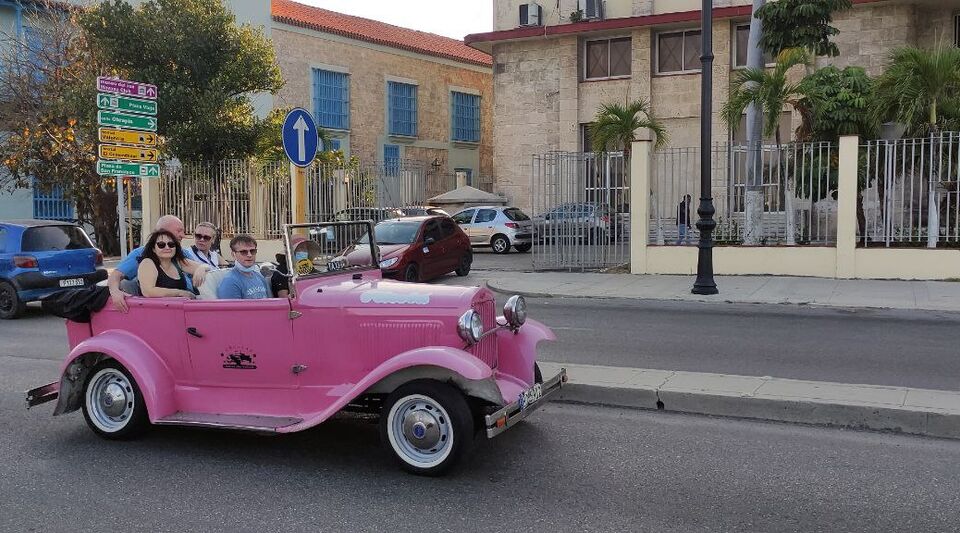From the ground it is difficult to fall, and this is well known by the Minister of Economy, Alejandro Gil, who said “national tourism has had a favorable behavior” in the first quarter of this year. Between January and March, the Island received 313,908, a much higher figure than the 128,159 in the same period of the previous year.
However, the number is tiny when compared to the travelers who left the same quarter, the best of the year, before the pandemic. In 2020, when the effect of border closures was already noticeable in many countries since March, 982,134 tourists arrived in the country; and a year earlier, in 2019, 1,470,457 were reached.
Alejandro Gil participated this Tuesday morning in a Council of Ministers meeting in which he offered several economic indicators and, speaking of tourism, the jewel in the crown for the Cuban Government, he explained that only in March it received 128,159 and April may be better than March. “This confirms a trend towards gradual recovery in this sector,” the minister said.
Although there is still a long year to go, this quarter tends to double the next two of the year and only in November and December does another opportunity for strength open up
It is indisputable that the figures recover from 2021, when 64,712 foreign tourists arrived in Cuba, around 6% from a year ago. In all of last year, the Island received a total of 573,944 international travelers, 60% less than in all of 2020. But it is more than misleading to maintain that the sector is recovering, when the difference with 2019, which was not a particularly good year in in relation to those immediately after the thaw, is more than a million.
The Government had planned to receive 2.5 million this year, but in view of today’s data, the poor prospects are confirmed. Although there is still a long year to go, this quarter tends to double the next two of the year and only in November and December does another opportunity for strength open up.
Cuba has also lost its main growing tourist market: Russia. Although Canadians and Americans continue to lead arrivals on the island, Russians have been increasing their share of the Cuban market for years, becoming, during the pandemic, almost her only support.
The invasion of Ukraine on February 24 and subsequent sanctions have had a huge impact on this sector. Cuba no longer has flights with Russia and both countries have been exploring the possibility of provide MIR cards to tourists, who operate in a banking network of the Russian Central Bank, avoiding sanctions on certain transactions.
Olga Skorobogatova, first vice president of the Central Bank, confirmed last week that several countries wanted to “cooperate with Russia.” “For example, Cuba is one of the latest projects we are currently working on. That is, our citizens will be able to use the MIR card in Cuba,” she explained before the Duma.
Shortly after, the Minister of Tourism of the Cuban embassy in Moscow, Juan Carlos Escalona, referred to this mechanism, which he considered “an important step” for the reopening of Russian tourism on the island, and added that visitors to the nation will be able to pay for their services in Cuba with them “as of the resumption of flights between the two countries.”
In November, when the island reopened its doors to international tourism, 8,019 Russians arrived at its main sun destinations in Cuba, while the Dominican received 21,387
At the moment there is no airline that covers the route between Moscow and Havana or any Cuban tourist pole. When the European Union and the United States prevented Russian ships from entering their airspace, routes were drawn up to avoid them passing through the southern Arctic, but these journeys prolong, and therefore make the trip too expensive.
It is not the only stumbling block. The Russians have tried benefits of competition. In November, when the island reopened its doors to international tourism, 8,019 Russians arrived at its main sun destinations in Cuba, while the Dominican received 21,387. Although the fact that the neighboring republic had beaten Cuba in the reopening of borders could have influenced this, the truth is that there was barely a month of difference.
This Monday, the tourism page Hosteltur published a report by ForwardKeys and presented at the Global Summit of the World Travel and Tourism Council (WTTC) with the title Outlook for world tourism. It reflects that the Caribbean is prepared to lead the recovery of the sector worldwide, but Cuba is not in the locomotive.
By reserves, Costa Rica has a growth of more than 30% compared to 2019 – a year that they do consider suitable for comparison – and then there are Aruba (23%), the Dominican Republic (16%), Jamaica (15%) and Mexico. (14%).
________________________
Collaborate with our work:
The team of 14ymedio is committed to doing serious journalism that reflects the reality of deep Cuba. Thank you for joining us on this long road. We invite you to continue supporting us, but this time becoming a member of our newspaper. Together we can continue transforming journalism in Cuba.








